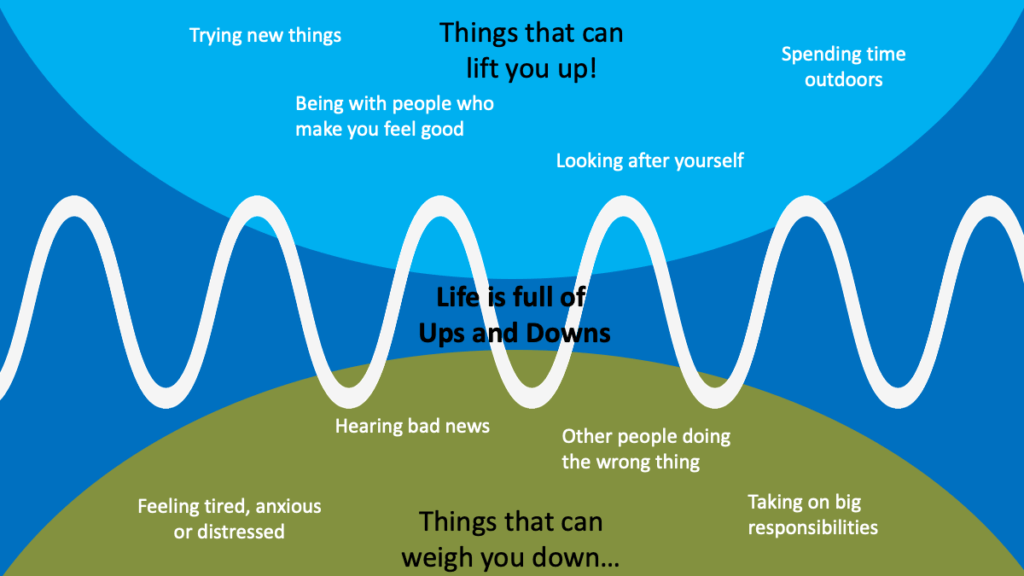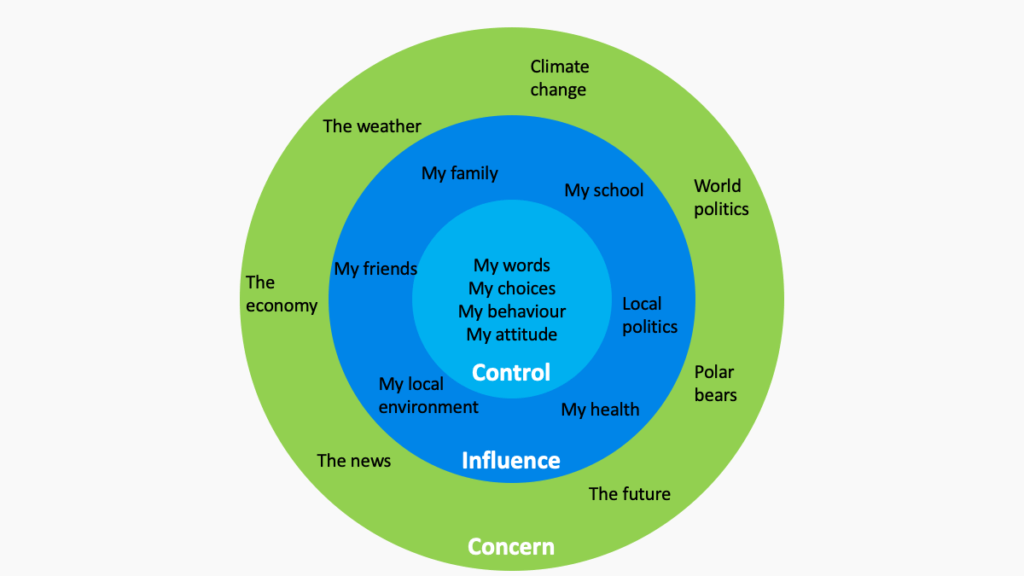Climate Feelings
Strong feelings can be helpful: they can give us the energy and focus we need to act in creative and transformative ways. But we need a healthy balance. Anxiety is a feeling that lets us know that change is happening. It can help us take care of ourselves and the things we care about. Too much anxiety, though, can stop us from doing the things we enjoy or need to do. Distress can help us learn what we care about and want to protect. But feeling distressed all the time might make it hard to concentrate or to enjoy other things. Recognising how you feel, and why, is important to navigating these feelings. It can also help us to understand ourselves and even move towards climate change solutions.
How to recognise feelings about climate
If you can identify your emotions, it can make it easier to work with them.

What can help?

What about taking action?

Connecting with others

It’s important to remember there are many things that it can’t take from us…
The love we share with others.
The joy of being part of a team.
And the satisfaction of helping to support the planet sustain all life.

For Teachers
Class activities
Print out the ‘Climate Emotions Wheel’ template developed by the Climate Mental Health Network. Ask your class to fill in the wheel with the emotions that they have about climate change. Validate all emotions and ensure understanding that there are no wrong emotions, and it is normal and reasonable to feel upset or concerned. Have students share and speak to their created wheels and use this to bridge a discussion toward self-care and addressing emotions, both of which are supported by the activities noted below.
Print out the ‘Ups and Downs’ template. Ask your class to fill in the things that lift them up, and the things that weigh them down. Talk about how they might experience these as oscillating ups and downs in everyday life. Ask them how they might be able to seek out things that lift them up if they are feeling anxious or distressed.
Print out the ‘Circles of Control’ template. Ask your class to describe the things that concern them and talk about whether these are things they can control, or things they can influence, or if they belong in the outside circle, of things that they can’t control. Ask them to think about what they think they might be able to influence, and what they can control. Remind them that if they are feeling overwhelmed by outside concerns, they can focus in on the things they can control.
Curriculum Connections:
Activities connect with Australian Curriculum V9 General Capability Personal and Social Capability (self-awareness/self-management).
References:
Climate Feelings Toolkit developed by Karen Grant, Outdoor Counselling.
Climate Mental Health Network (2023). Climate Emotions Wheel Activity. https://www.climatementalhealth.net/_files/ugd/d424e1_71802b234f66479c80d6780e885e9960.pdf
Margaret Stroebe, Henk Schut (1999) THE DUAL PROCESS MODEL OF COPING WITH BEREAVEMENT: RATIONALE AND DESCRIPTION, Death Studies, 23:3, 197-224, DOI: 10.1080/074811899201046
Who is behind Curious Climate Schools? Curious Climate Schools is run by climate change and education researchers at the University of Tasmania. It’s funded by the Tasmanian Climate Change Office, the University’s College of Science and Engineering, and the University’s Centre for Marine Socioecology (CMS). Curious Climate Schools builds on the first successful Curious Climate project which answered climate questions in communities around Tasmania.













